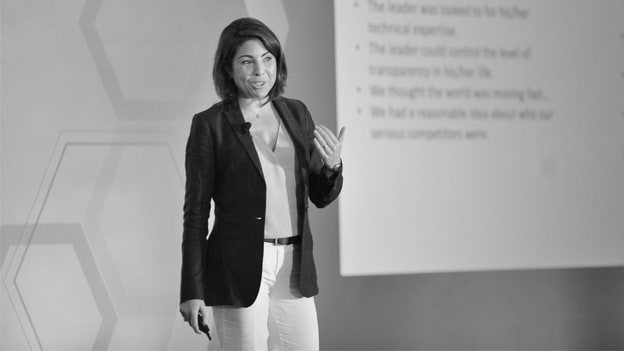11 must-have competencies for leaders in the digital age

What’s common between Angela Ahrendts, Burberry; David Kenny, from the Weather Company; David Epstein, Novartis and John Stack from The Tate Gallery?
They are all examples of some of the greatest business leaders who led their businesses on digital transformation journey with their vision and passion.
Angela Ahrendts transformed Burberry from a traditional to a digital fashion brand. David Kenny ran a weather channel and when the media got hit, he chose to use all the weather data and sell it to those who need it. David Epstein, Novartis, used technology to collect and analyze data on how doctors are prescribing medicines to patients to make decisions. John Stack at The Tate Gallery revolutionized the ways a traditional art gallery was run to bring more value to the museum collection.
What were some characteristics that helped these change leaders in driving a successful transformation?
To make it easier and simpler to understand the competencies that transformational leaders like them hold Jennifer Jordan, Professor of Leadership and Organizational Behavior, IMD, shared an interesting leadership competency framework at the Human Capital & Leadership Symposium in Singapore.
This framework brings about the competencies required by the leaders in the digital age. These 11 competencies have been defined by a quantitative survey of more than 1,000 senior business leaders globally and semi-structured interviews with dozens of executives affected by the digital disruption.
Here is a quick run through of the competencies:
Humble
The ability to accept feedback and acknowledge and accept the fact that others may know more than you. Humble leaders are always open to learning, challenging assumptions and opinions that help the team in gathering and building on new and innovative ideas.
Self-awareness
True humility requires self-awareness which refers to having an accurate assessment of both strengths and weaknesses and seeing them in the context of a larger whole.
Adaptable
This refers to accepting that change is constant and embracing and preparing yourself based on available information reflects strength rather than weakness.
Tolerance to uncertainty
Being highly adaptable does not necessarily mean not being opinionated. Professor Jordan argues that while successful leaders are adaptable they have strong opinions even in the wake of uncertainty and unknown.
Visionary
This competency truly differentiates successful leaders in the digital age and refers to having a clear sense of long-term direction, even in the face of short-term uncertainty.
Influencing & persuading others
As Pete Blackshaw, Global Head Digital Innovation, Nestle said, “Old Fashioned skills like selling and persuading are more important than ever.”
A vision needs to be believed in by people and needs to be communicated to others with conviction to reach its final destination.
Informed decision-making
Passion and a strong vision, when paired with facts and data, make a solid business case. A good change leader would always make use of data and information to make evidence-based decisions. Professor Jordan shared an example of Ahold Delhaize, a grocery store in the Netherlands. At the entry of the store, the loyalty card owners can pull out a handheld device to scan as they shop through. At the end, they just have to check the total bill and swipe the card. While customer experience is a key for the organization, the primary objective is to collect as much data as possible on the shopping patterns which later help the leaders in making critical business decisions.
Fast Execution
While data-based decision-making is key, decisions need to be made with speed. Eg. Scrum methodology of “Learn – Build – Measure” has found ways into multiple processes across the organizations beyond software development.
Engaged
A willingness to listen, interact and communicate with internal and external stakeholders combined with a strong sense of interest and curiosity in emerging trends will always help the leaders in staying ahead of the curve and relevant.
Hyper-awareness
This refers to the constant scanning of internal and external environments for opportunities & threats. It is not just about knowing how can you solve a problem today; it is also about how can you solve it tomorrow.
Build networks
Hyper-awareness and self-awareness help in understanding and identifying the areas of strength and weaknesses. This creates an opportunity for the leader to create a network of people who may complement them and have the information that helps them in achieving their vision.
Prof. Jordan summarizes that besides these 11 competencies there are 3 more elements that are needed by a successful leader in this digital age: trait/skills necessary to lead/accomplish the goals; a context that fosters or encourages these traits & skills and finally, a belief that you can lead/accomplish your goals.
The above article is based on a session by Jennifer Jordan, Professor of Leadership and Organizational Behavior, IMD at HCLI’s Asian Human Capital & Leadership Symposium 2018 in Singapore.

















